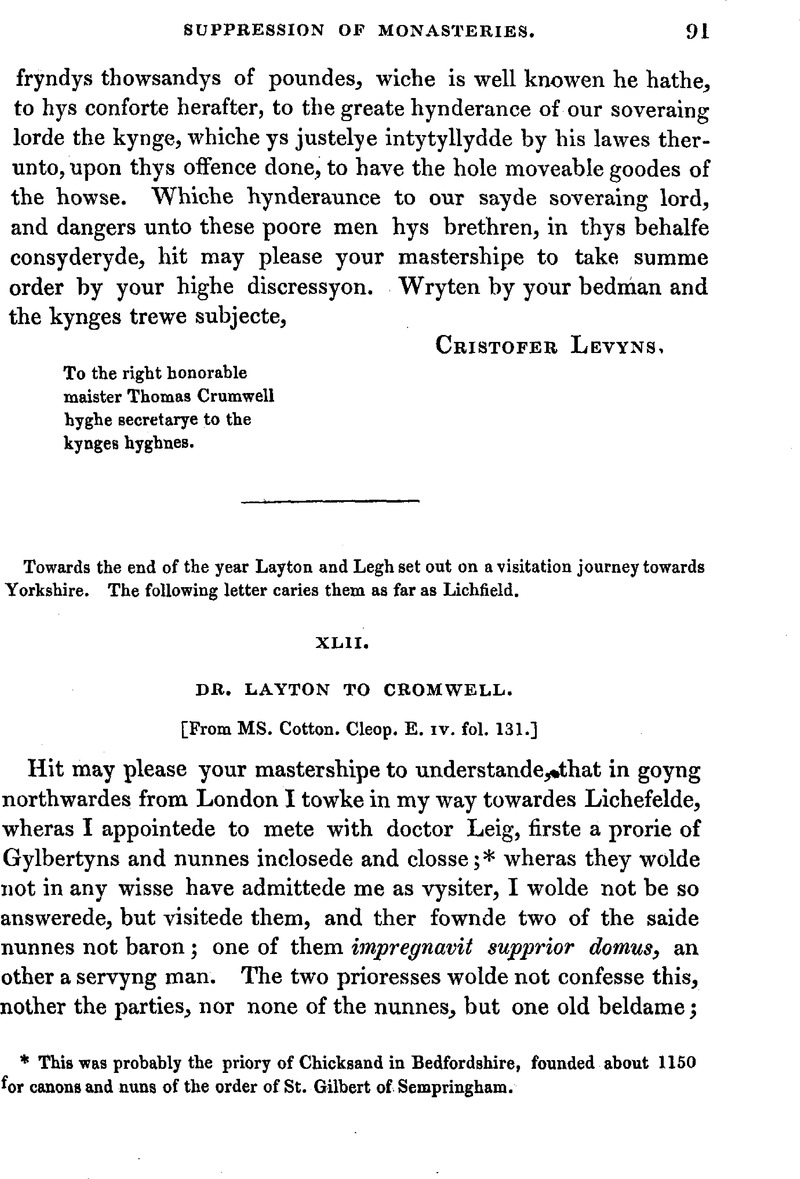No CrossRef data available.
Article contents
XLII. Dr. Layton to Cromwell
Published online by Cambridge University Press: 23 February 2010
Abstract

- Type
- Chapter I. The Period Previous to the Passing of the Act for the Suppression of the Smaller Monasteries
- Information
- Camden Old Series , Volume 26: Three Chapters of Letters Relating to the Suppression of Monasteries , September 1843 , pp. 91 - 94
- Copyright
- Copyright © Royal Historical Society 1843
References
page 91 note * This was probably the priory of Chicksand in Bedfordshire, founded about 1150 for canons and nuns of the order of St. Gilbert of Sempringham.
page 92 note * At Harewold, or Harwood, in Bedfordshire, there was a priory of nuns of the order of St. Augustine, founded in the middle of the twelfth century. Very little is known of its history.
page 92 note † Sir John Mordaunt, who had been sheriff of Bedford and Bucks in the first year of Henry's reign, and had been employed by that monarch in several important occasions. He was summoned to parliament as a baron in 1532.
page 92 note ‡ The date of the original foundation of the priory of St. Andrew in Northampton is somewhat uncertain. In 1084, Simon de St. Liz, the first Norman Earl of Northampton and Huntingdon, repaired and newly endowed this house, and placed in it a company of Cluniac monks. The last prior is said to have been Francis Abtree, alias Leicester: it is stated in the last edition of Dugdale that he is called by Layton in this letter John Petie, the words “I have petie” having been mistaken for a proper name.
page 93 note * The College of Newark, or St. Mary's the greater, in the city of Leicester, was founded by Henry duke of Lancaster, and the buildings completed by John of Gaunt. The church was destroyed after the dissolution.
page 93 note † The collegiate church of Southwell in Nottinghamshire is said to have been founded by Paulinus archbishop of York about A.d. 630. Subsequently in the twelfth century it consisted of sixteen canons. After its dissolution, it was restored by Henry VIII. and still exists.
page 93 note ‡ John Longland, consecrated in 1521, and no very zealous reformer.




